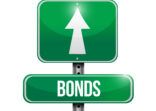The data, which includes funds made available for sale in Hong Kong, Singapore, Philippines, Taiwan and global cross border funds for sale in the region (such as Ucits), shows that inflows in multi-strategy funds totalled nearly $10bn, followed by Asia bond funds ($5.1bn) and global high yield bond funds ($4.0bn).

Source: Morningstar
Capital moving into multi-strategy funds was driven by the JPM Global Macro Opportunity Fund, which had $5.7bn in net inflows.
Over the last 12 months, Asian investors have become cautious with both equity and fixed income asset classes due to valuations, especially in developed markets, according to Wing Chan, Hong Kong-based director of manager research for Asia at Morningstar. Investors are also worried about the global growth outlook.
Therefore, investors are looking for an absolute return-type strategy that promises an absolute return objective.
“Some of these funds are within the multi-strategy category,” he said.
The JP Morgan fund, which is a Ucits fund, offers an absolute return target, Chan said, which makes the fund attractive to investors.
He noted, however, that multi-strategy funds have yet to prove that they can indeed offer returns in wildly unpredictable markets.
Bond inflows
Besides multi-strategy funds, investors also like Asia bonds and global high yield bonds, according to Morningstar data.
Although they are categorised as having higher risk compared to other fixed income classes, investors may be looking at protection from currency volatility, according to Chan.
These fixed income funds are usually denominated in US dollars, Chan explained, adding that the US dollar has been fairly strong during the second half of 2016.
“Investors are looking for an income stream, and probably income that has little currency depreciation,” he said.
________________________________________________________
The one-year performance of the JPM Global Macro Opportunities Fund versus its sector average return, according to data from FE Analytics.

Global bond outflows
On the flipside, global bond funds bled the most during in 2016, seeing net outflows of around $9.6bn.
They were dragged down by two Franklin Templeton funds – the Templeton Global Bond ($6.3bn of net outflows) and the Templeton Global Total Return funds ($6.5bn of net outflows), Morningstar data shows. Both funds have also had net outflows in 2014 and in 2015.
Commenting on the category, Chan said that there was a rotation of money out of global bonds, which usually invest in developed market sovereign or government bonds, as investors have been expecting rate hikes in the US.
But the situation is different for the two Templeton funds, he said.
Unlike most global bond funds, the Templeton funds also invest in emerging markets, and emerging market bonds have not done very well in the last couple of years, Chan said.
Michael Hasenstab, portfolio manager of both funds, does not think like other global bond fund managers, Chan said, adding that the investment team looks for the best valuation opportunity.
Both funds have not done well, but have rebounded very strongly during the fourth quarter of last year, according to Chan. During the third quarter, the Templeton Global Bond and Templeton Global Return Fund returned -3.71% and -2.57%, but have rebounded to 4.35% and 5.98%, respectively, he said.
Equity fund caution
Equity funds saw net outflows during the year, which include China equity funds, which saw the biggest outflow in the asset class, followed by sector equity healthcare, India, Europe flex-cap and Asia ex-Japan.
Those fund categories saw a combined net outflow of $11.7bn, according to Morningstar data.
The lacklustre performance of the Chinese market last year and volatility in Asian markets made investors cautious on the equity asset class, Chan said.
The Chinese stock market performed poorly during the year, with the Shanghai and Shenzhen Composite indices slumping by -12.3% and -14.7%, respectively, according to a report on global markets by the Securities and Futures Commission.
The Chinese market was volatile given worries about a succession of bubbles across different asset classes and regulatory tightening to address market risks, the SFC said. In addition, the market dropped in early 2016 amid concern over the economic outlook and a weakening of the renminbi.
In India, investors may have been concerned about the demonetisation in November, which may have implications for the growth outlook in the India market, Chan said.
Commenting on the healthcare sector, Chan said that investors may have been enthusiastic about biotech earlier, but the sector saw a correction in 2016, which may have led to the outflows.
“In many of the sector funds, there seems to be more tactical trading involved.” He explained that this involves investors trying to chase returns in the short-term, making it more likely they will buy high and sell low.
“So the return for the investor would be worse off than the fund actually experiences,” he said.
















